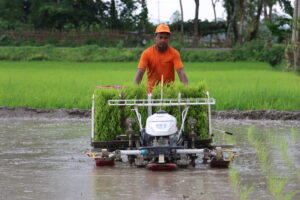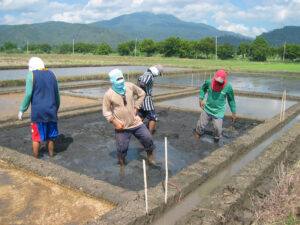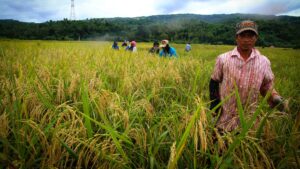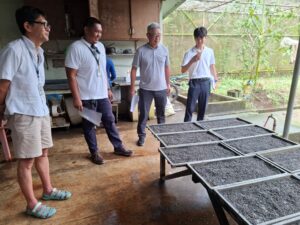In a fragile balance, how do we protect a staple that feeds billions?
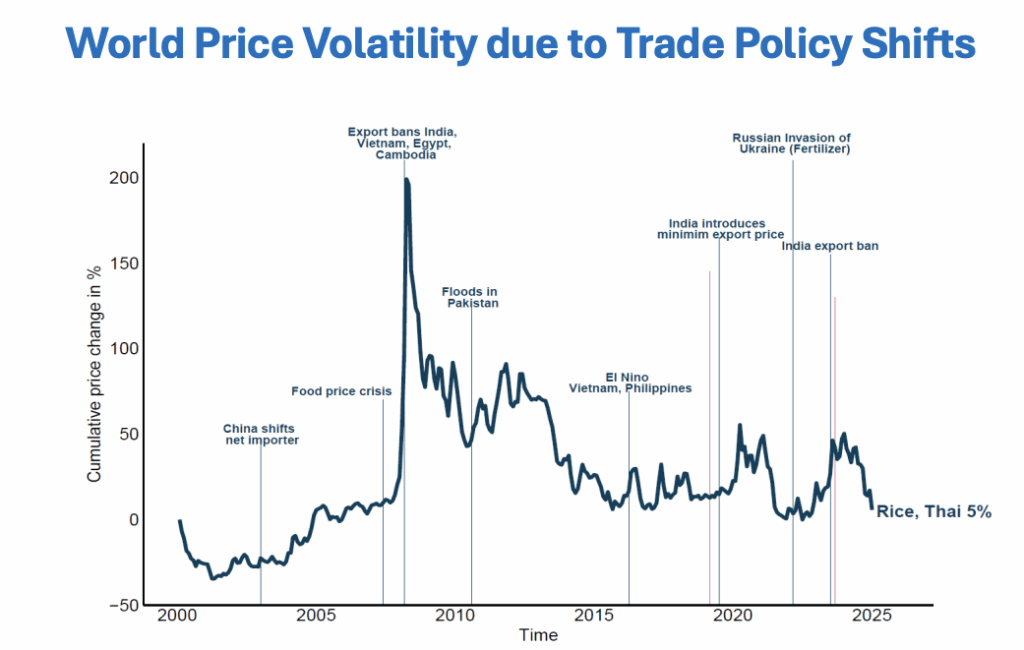
LOS BAÑOS, Philippines (19 August 2025) — The global rice market plays a central role in food security, trade stability, and rural livelihoods across much of Asia and Africa. In recognition of its importance, the 2025 Council for Partnerships on Rice Research in Asia (CORRA) Science Webinar, hosted by the International Rice Research Institute (IRRI), focused on understanding the forces shaping rice markets and their implications for national strategies and regional collaboration.
Drawing from IRRI’s global modeling work, IRRI Senior Scientist for Policy Analysis and Climate Change Dr. Alisher Mirzabaev outlined key trends influencing the balance of rice supply and demand, the role of climate and policy shocks, and emerging opportunities for strengthening resilience through research, technology, and institutional coordination.
Demand is growing but supply faces challenges
Current projections indicate that global rice demand will continue to grow over the next 25 years, driven by population growth in Asia and Africa and by shifts in consumer preferences linked to income growth and urbanization. However, supply is expected to face increasing constraints. In many producing countries, the expansion of rice-growing areas has reached ecologically sustainable limits. As a result, future gains in production will need to come primarily from yield improvements.
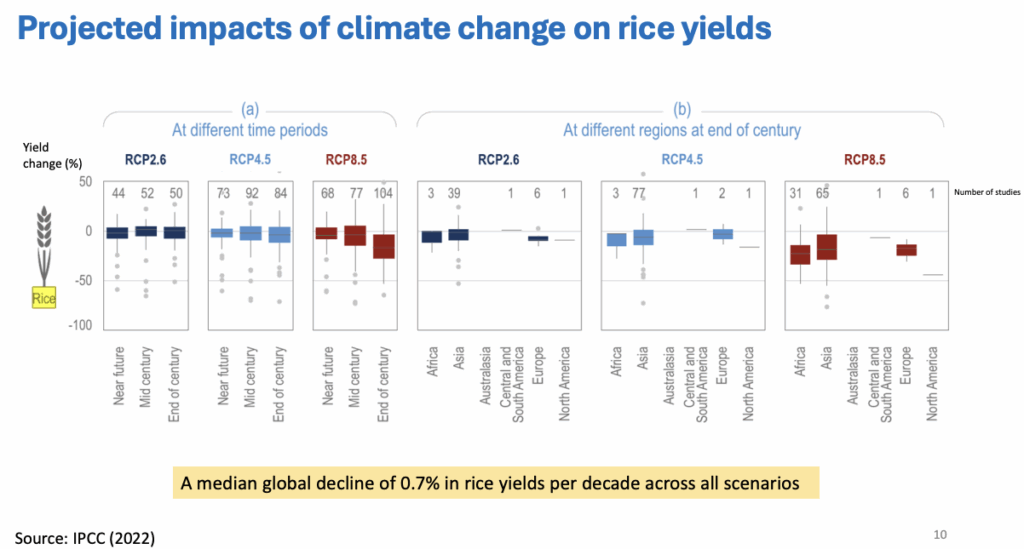
Yet yield growth is not guaranteed. Land degradation, water scarcity, and climate-related stresses are contributing to stagnating or even declining productivity in some regions. These limitations are further compounded by weather variability and an increasing frequency of extreme events, which are already disrupting production and trade in some areas.
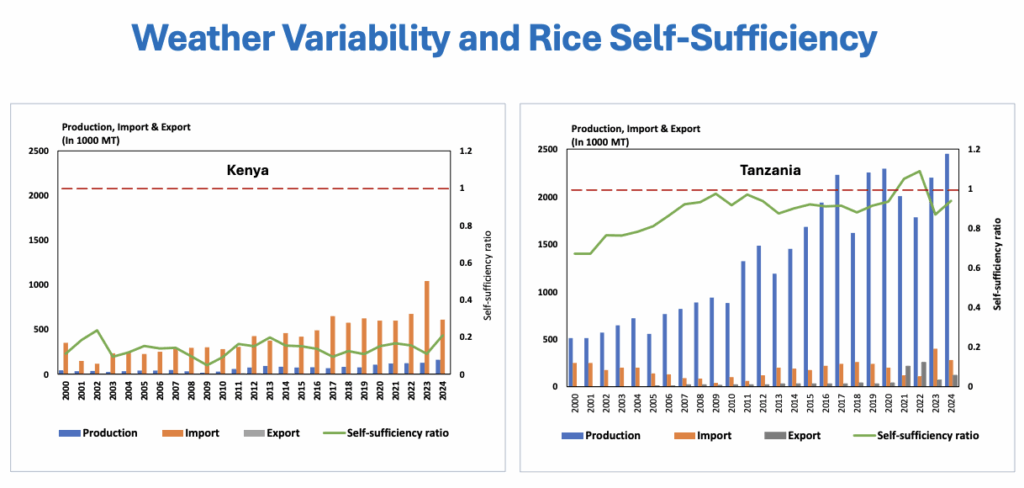
Climate change is contributing to longer-term changes in rice production. While some regions may see temporary benefits, the overall global impact is expected to be negative. In countries like Tanzania and Kenya, droughts have periodically reduced rice self-sufficiency, leading to increased dependence on imports.
Weather and policy shocks are driving market volatility
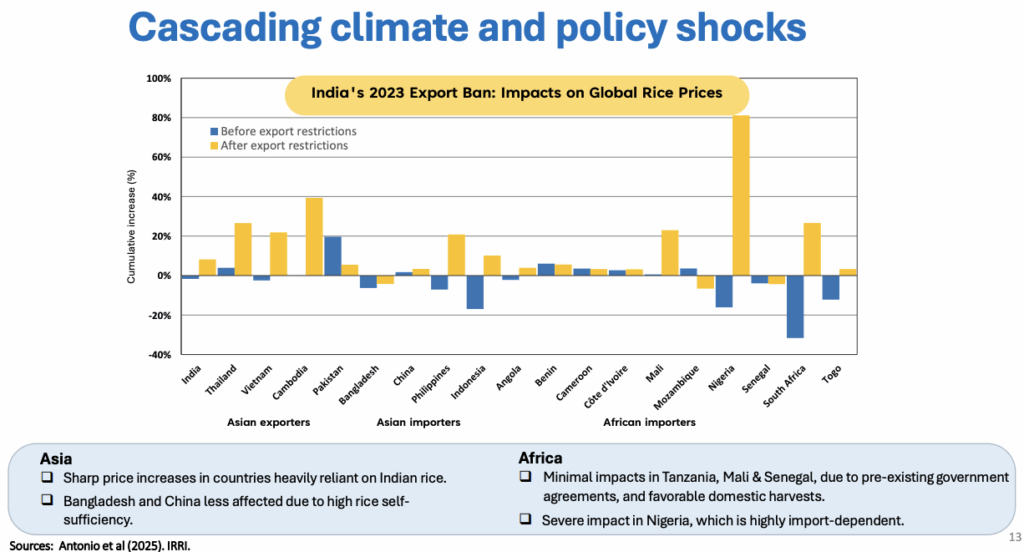
In recent years, a combination of climate-related events and trade policies has led to greater market volatility. For example, the 2023 rice price spike followed a season of reduced rainfall and drought in key producing countries. This was followed by India’s temporary export restrictions, which added further pressure on supply and drove up prices in import-reliant countries. Where governments had sufficient domestic production, strong stocks, or long-term import agreements, the impact was less severe. Elsewhere, prices rose sharply.
The growing volatility is such that currently, just a couple of seasons since sharp price rises, countries are facing the opposite problem. With more recent bumper harvests, global rice stocks are currently at record-high levels, with countries like India and China maintaining large reserves. These stocks are adding further downward pressure to international prices. However, with the global supply-demand balance being very tight, even small disruptions, whether due to weather or policy, can lead to rapid changes in prices.
These market dynamics highlight the importance of building resilience across the rice sector. Countries are increasingly turning to new technologies and practices to adapt. Examples include flood- and drought-tolerant rice varieties, improved water management systems, and early warning tools.
In India, the submergence-tolerant Swarna Sub1 has improved yields in flood-prone areas, while the Philippines’ PRISM system supports disaster preparedness by tracking potential crop losses during extreme weather events.
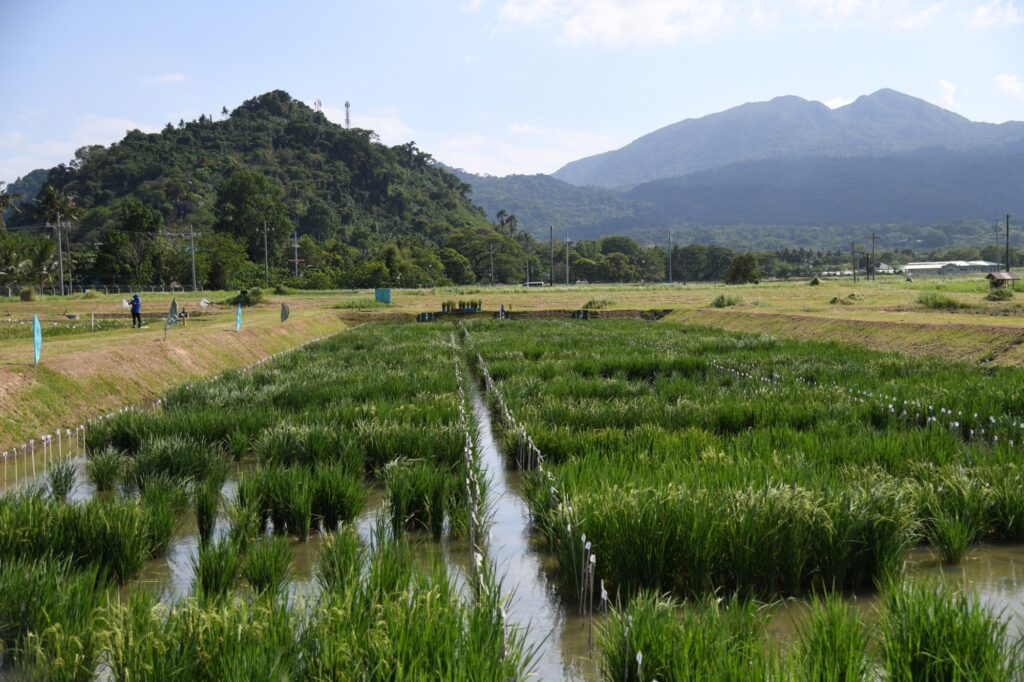
Some countries are refining domestic regulations to better support both farmers and consumers. Policy measures are also evolving to help manage price swings. Regional initiatives, like the ASEAN Plus Three Emergency Rice Reserve, aim to improve collective response to future shocks, while governments in the region are maintaining strategic rice reserves, adjusting tariffs based on market conditions, and entering bilateral cooperation agreements.
Building a more resilient and responsive rice system
Looking ahead, volatility in the global rice market is expected to continue as climate and policy uncertainties persist. However, this uncertainty also opens the door to forward-looking investments and reforms. Climate-resilient rice production, combined with improved market mechanisms, can help buffer the effects of shocks. Tools such as data-driven forecasting, index-based insurance, and international climate financing can strengthen preparedness and response across the system.
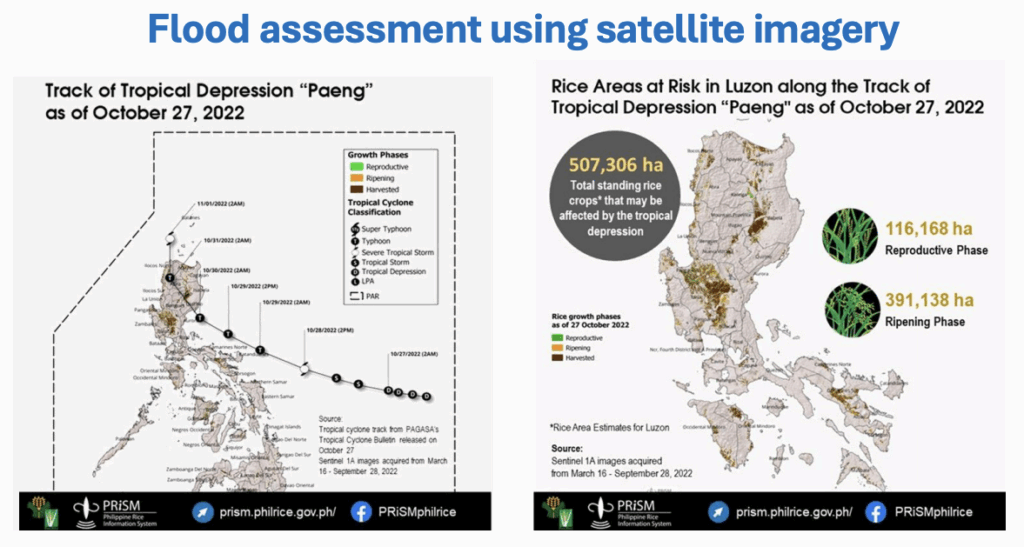
Mirzabaev emphasized the value of shared learning and collaboration across countries. IRRI is closely working with partners from CORRA member countries and beyond, through scientific research, capacity building, and technologies, supporting effective national responses grounded in local contexts, capacities, and priorities.
As the rice sector navigates this complex environment, aligning research, innovation, and policy action will be key. By working together, stakeholders can help ensure that the global rice market continues to serve as a reliable foundation for food security and economic stability, despite the peaks and valleys that define its rhythm.


